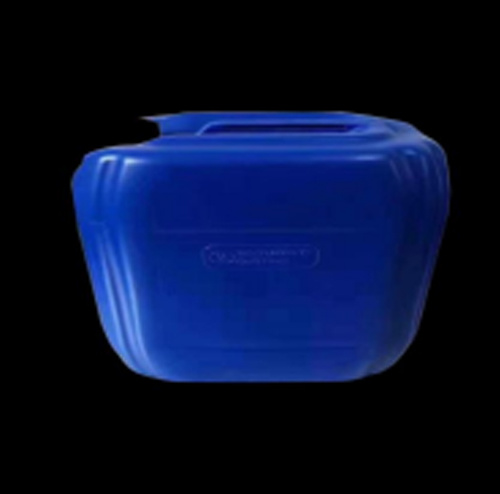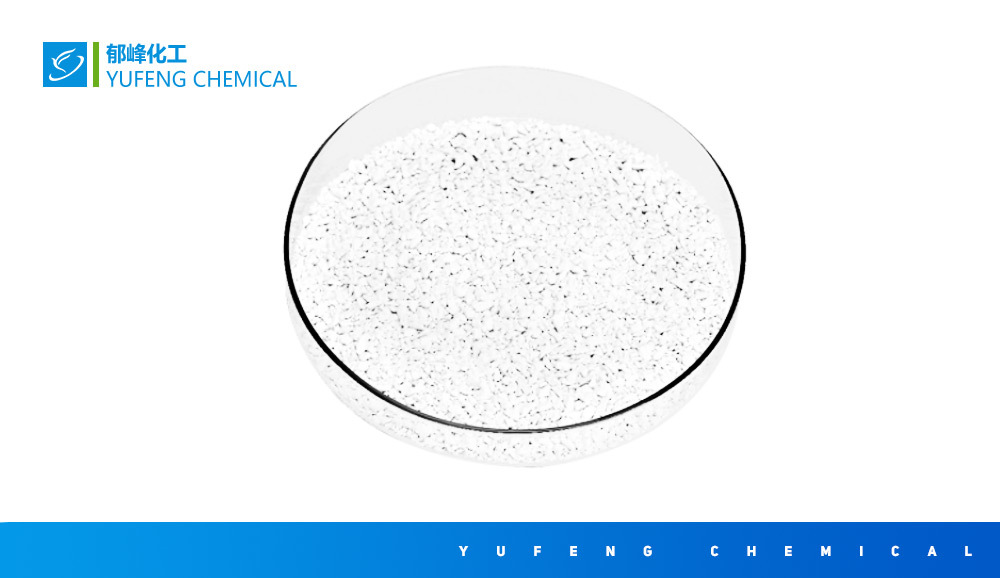Sodium Hypochlorite Solution
Sodium hypochlorite is a liquid substance containing 10% -13% effective chlorine, with a transparent solution. It has less residue after use and is easy to clean. It is often used in places with low residue requirements such as civil use, food, and aquaculture.
Category:
Sodium hypochlorite
Keywords:
Sodium Hypochlorite Solution

Details
- Sodium hypochlorite is a liquid substance containing 10% -13% effective chlorine, with a transparent solution. It has less residue after use and is easy to clean. It is often used in places with low residue requirements such as civil use, food, and aquaculture.
①Application: Used as a cleaning agent, disinfectant, and deodorant for aquaculture, livestock farms, and livestock houses. ②Principle: The reactive oxygen species decomposed by sodium hypochlorite destroy protein and enzyme systems, thereby killing bacteria and microorganisms. ③Usage: The user shall calculate and prepare an aqueous solution containing a certain effective chlorine content according to their own usage requirements, and then spray, wipe, soak, and cover it for sterilization and disinfection, and maintain it for a certain period of time. Reference method: Add approximately 5 grams of sodium hypochlorite solution containing 10% chlorine to 1 liter of water, stir well, and prepare a disinfectant solution containing approximately 500mg/L of effective chlorine. Spray the cover of breeding, livestock farms, and livestock sheds for 10-15 minutes.
②Principle: The reactive oxygen species decomposed by sodium hypochlorite destroy protein and enzyme systems, thereby killing bacteria and microorganisms.
③Usage: The user shall calculate and prepare an aqueous solution containing a certain effective chlorine content according to their own usage requirements, and then spray, wipe, soak, and cover it for sterilization and disinfection, and maintain it for a certain period of time.
Reference method: Add approximately 5 grams of sodium hypochlorite solution containing 10% chlorine to 1 liter of water, stir well, and prepare a disinfectant solution containing approximately 500mg/L of effective chlorine. Spray the cover of breeding, livestock farms, and livestock sheds for 10-15 minutes.
①Application: Used for the disinfection of beverage water, fruits and vegetables, as well as the cleaning, sterilization, and disinfection of food manufacturing equipment and utensils. Sodium hypochlorite is required to meet food grade quality standards.
②Principle: The reactive oxygen species decomposed by sodium hypochlorite destroy protein and enzyme systems, thereby killing bacteria and inhibiting the proliferation of harmful bacteria.
③Usage: The user shall calculate and prepare an aqueous solution containing a certain effective chlorine content according to their own usage requirements, and then spray, wipe, soak, and cover it for sterilization and disinfection, and maintain it for a certain period of time.
①Application: Used as a water purification agent, fungicide, and disinfectant in waterworks, reclaimed water discharge after environmental sewage treatment, sterilization and algae removal of industrial circulating water, and medical institution wastewater.
②Principle: The active oxygen generated by the decomposition of sodium hypochlorite destroys protein and enzyme systems, kills harmful microorganisms, bacteria, algae, and viruses, inhibits microbial reproduction and the growth of harmful bacteria, and makes tap water meet human drinking requirements. Wastewater discharge meets regulatory requirements.
③Usage: Users can use it according to their own specific usage methods.
Reference method: In order to accurately add and prevent decomposition, the original solution should be diluted in different proportions before use, such as a ratio of 1:1 to 1:9 between the original solution and dilution water. Then, the dosage of the diluted agent per unit of water should be calculated according to the effective chlorine concentration requirements.
The residual chlorine concentration and dwell time after different water quality treatments are shown in the following table:
| Water quality classification | Residual chlorine concentration(mg/L) | Dwell time (minutes) | reference material |
|---|---|---|---|
| urban water supply | 0.3-0.5 | ≧30 | Hygienic specifications for disinfectants |
| Discharge of reclaimed water after environmental sewage treatment | 4-6 | ≧60 | Hygienic specifications for disinfectants |
| Industrial circulating water | 0.3-1.0 | ≧30 | Industrial circulating water standard |
| Wastewater from medical institutions | 6-10 | ≧90 | GB18446-2005 |
①Application: Used for disinfection, sterilization, algae killing, and odor removal in swimming pools.
②Principle: The human body will emit organic and inorganic pollutants in the swimming pool for a long time, which can cause water pollution, generate algae, and emit unpleasant odors. After adding hypochlorite solution, the decomposed effective reactive oxygen species can damage the protein and enzyme system, play a sterilization and disinfection role, eliminate pollutants and odors, and inhibit the production and reproduction of algae.
③Usage: Users can use it according to their own specific usage methods.
Reference method: Generally, the water in the pool contains about 5mg/L of chlorine, which can provide sterilization and disinfection effects. The approximate proportion of adding sodium hypochlorite solution to the pool water is 50g of 10% sodium hypochlorite solution to 1 ton of water (1 cubic meter); After a period of time (such as 2-4 hours), effective chlorine will gradually be consumed. To maintain the residual chlorine content in the pool water not less than 0.4-0.6mg/L, it is necessary to add sodium hypochlorite solution regularly. If the chlorine content in the pool water exceeds 10mg/L, it will cause discomfort to the human body, so the amount of sodium hypochlorite solution added each time should not be too much.
①Application: Mainly used for sterilization and disinfection of public facilities, including tables and chairs, benches, armrests, hand basins, bathrooms, door handles, elevators, office equipment, trash cans, garbage, and roads.
②Principle: Sodium hypochlorite has oxidizing properties, and the decomposed reactive oxygen species disrupt protein and enzyme systems, thereby killing bacteria and viruses.
③Usage: Prepare and disinfect disinfectant according to relevant public facility disinfection standards
Reference usage method: For garbage cans, garbage, and public facilities outside of roads, spray and wipe with an aqueous solution containing 500-1000mg/L of effective chlorine. After 30 minutes of exposure, rinse with clean water. Roads can be regularly sprayed with an aqueous solution containing 500-1000mg/L of effective chlorine. Garbage bins and garbage should be sprayed with an aqueous solution containing 1000-3000mg/L of effective chlorine. Preparation of an aqueous solution containing 500-1000mg/L effective chlorine: Mix sodium hypochlorite solution with water in a ratio of 1:200 to 1:100. Preparation of an aqueous solution containing 1000-3000mg/L effective chlorine: Mix sodium hypochlorite solution with water in a ratio of 1:100 to 1:33.
①Application: Mainly used for bleaching pulp, textiles (such as cotton and linen fabrics, towels, sweaters, etc.), chemical fibers, and starch. The soap industry is used as a bleaching agent for fats and oils.
②Principle:Sodium hypochlorite has strong oxidization, which can oxidize and destroy the pigment molecular structure of the hair color group, making the colored matter become colorless, difficult to restore the original color after bleaching, irreversible color change, and cleaning and decontamination.
③Usage: Users can prepare special treatment agents including bleach and other materials in proportion and concentration according to the requirements of the raw material to be bleached, prevention of damage and deterioration, and bleaching effect, to bleach the raw material.
The effective chlorine concentration in industrial bleaching agents for reference is generally 1000-3000mg/L for embryo cloth bleaching in textile printing and dyeing; The paper bleaching rate in the paper industry is generally 500-1000mg/L.
①Application: Mainly used for bleaching white and yellowed, grayed, stained, and spotted clothes and fabrics, as well as for cleaning and decontamination. It cannot be used for clothing made of protein containing materials such as silk, wool, and cashmere.
②Principle: Sodium hypochlorite has strong oxidization, which can oxidize and destroy the molecular structure of pigments, making the colored matter become colorless. It is not easy to restore the original color after bleaching, and it also has the function of cleaning and decontamination.
Sodium hypochlorite can react with protein and damage silk and wool fabrics containing protein components. It is not recommended to bleach such clothing.
③Usage: Generally, household clothing is bleached with 84 disinfectants containing different proportions of sodium hypochlorite available on the market, as long as the bleaching operation is carried out according to the instructions.
Reference usage: Generally, clothing bleaching requires an aqueous solution containing 300-500mg/L of chlorine. The dilution method is to dilute the original solution with water at a ratio of 1:160-100, which is about 5% chlorine. This means adding 3-4 bottle caps (10ml bottle caps) of 84 solution (about 25-40ml) to half a basin of water in a medium-sized plastic basin (about 4 liters). After wearing plastic gloves and stirring evenly, it can be used for bleaching. Completely immerse the clothes in diluted bleach water, repeatedly flip the clothes, soak the clothes for 30-40 minutes, and after confirming the bleaching effect, wring them dry. Wash with clean water multiple times to remove residual disinfectant. For stains with darker colors and smaller areas, it is necessary to use a small dilution ratio and high concentration bleach solution for local brushing or partial soaking bleaching.



Releated Products
Inquiry



